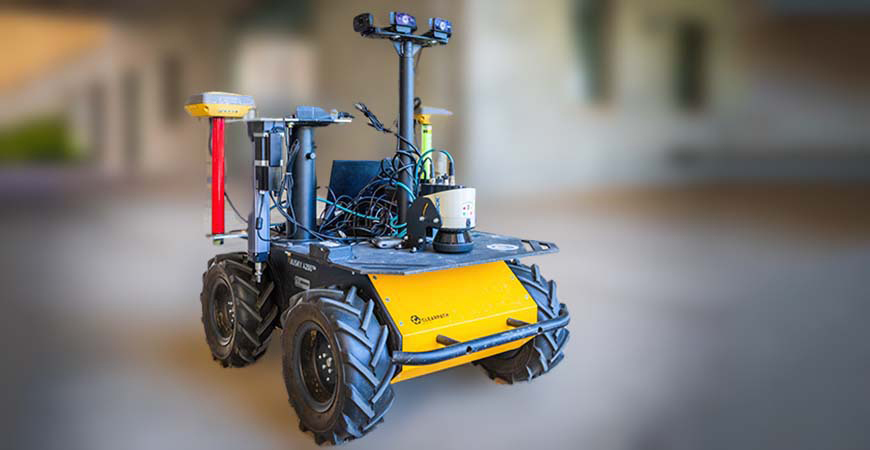
An autonomous ground robot could one day help farmers know when best to water crops.
Current techniques for measuring crop moisture either involve bringing leaf samples to off-site labs for analysis using very accurate, expensive pressure chambers, or analyzing leaves in the field using hand-held pressure chambers. Both methods are time- and labor-intensive, “and cannot scale easily at larger fields,” said researcher Konstantinos Karydis at the University of California, Riverside.
The scientists hope to solve this problem using a robot to navigate rows of crops, autonomously testing leaves on site. They will partner the robot with drones that can survey the fields and direct it to areas of interest.
“At this time, we anticipate using a small camera for identifying leaves, a depth camera and LiDAR for autonomous navigation in the field, and a pressure sensor and a miniature camera for performing in-situ leaf water-potential analysis,” Karydis said.
The plan is to gather data even in large fields over time instead of just providing snapshots as is currently done. This can help farmers better plan irrigation schedules to conserve water and help decrease some of the costs in the food-production chain.
The researchers plan to have the first set of automated pressure chamber prototypes fabricated by the spring of 2021, and to evaluate their performance and refine designs over the spring and summer. They expect to have a completed setup by the winter of 2022, so they can begin controlled field tests.
The scientists have received a grant for more than $1 million for their work from the U.S. Department of Agriculture through the National Science Foundation’s National Robotics Initiative. Karydis noted they have some preliminary commercial interest in their work.
Photo courtesy of UC Riverside.

